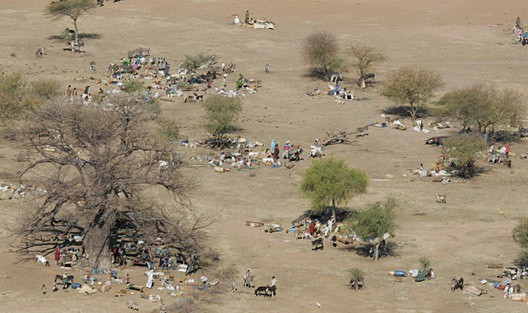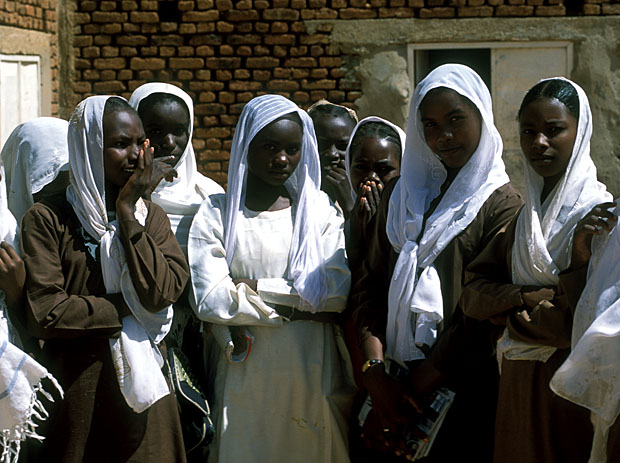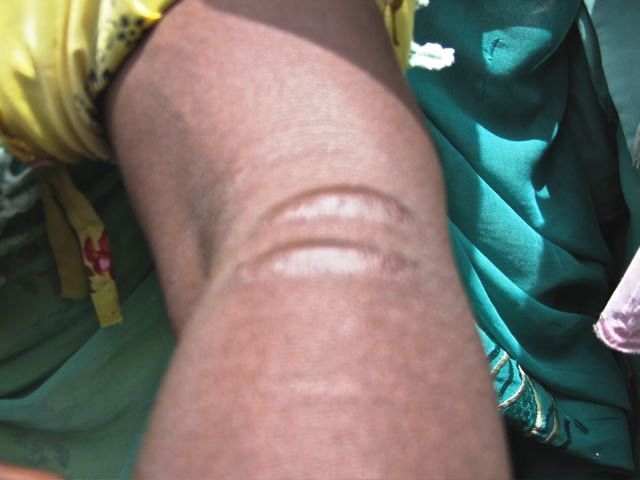“Raping Girls in Darfur: A Continuing Weapon of War,” The Huffington Post, January 21, 2016
by Eric Reeves
Despite an almost total lack of news coverage, genocide in Darfur is entering its fourteenth year. It is certainly the longest genocide in more than century, and shows no signs of having “decisively cooled,” as a New York Times reporter suggested four years ago. On the contrary, since that time the genocide has dramatically accelerated, with massive, ethnically-targeted violence and displacement defining most of this western region of Sudan. Some areas, North Darfur in particular, are seeing levels of violence as great as those of the early days of the genocide (2003 – 2005)–a time when American civil society enthusiastically took on the cause of Darfur. So great was the campaign to “save Darfur” that even politicians felt an obligation to respond. During his campaign for president, Barack Obama called Darfur a “stain on our souls,” vowing that as president, “I don’t intend to abandon people or turn a blind eye to slaughter.”
But the Obama administration has turned a “blind eye” to Darfur, indeed has gone so far as to “de-couple” Darfur from the major bilateral issue between Washington and Khartoum: counter-terrorism intelligence from the brutal National Islamic Front/National Congress regime responsible for the Darfur genocide in return for a lifting of U.S. sanctions.
Some of the more than 2 million people who have been internally displaced in Darfur since the official deployment of the UN/African Union hybrid Mission (UNAMID) in January 2008; the Obama administration took office a year later and continued a policy of failing to respond to the manifest inadequacies of UNAMID to stem the violence or displacement in Darfur—or to ensure a secure environment for humanitarian operations. Many tens of thousands of Darfuris became refugees in eastern Chad during the same period. The UN High Commission for Refugees now estimates the there are some 380,000 Darfuris living as refugees in Chad.
What does this unwillingness to look directly at the horrors in Darfur entail? A great deal, but nothing more shocking than the epidemic of sexual violence that has defined the genocide from the very beginning. A mass of evidence indicates that Khartoum’s regular troops and Arab militia allies have raped many tens of thousands of non Arab/African (“black”) women; and according to UN assessments, about a third of these women are girls under the age of eighteen–some as young as five and six years old. The ethnic animus in these rapes is patent.
Primary targets for the Arab militias in Darfur, particularly the Rapid Support Forces, as well as the Khartoum regime’s regular Sudan Armed Forces (SAF)
A number of human rights groups have provided compelling studies demonstrating this fundamental fact about rape as a weapon of war. Amnesty International noted telling examples early in the genocide, many from Darfuris who had fled to eastern Chad:
“[President] Omar al-Bashir told us that we should kill all the Nubas [derogatory racist term for African populations]. There is no place here for the Negroes any more.” (Words of a Janjawid [Arab militia] fighter…interviewed by Amnesty International, Chad, May 2004)
M., a 50-year-old woman from Fur Baranga: “The village was attacked during the night in October 2003, when the Arabs came by cars and on horses. They said ‘every black woman must be killed, even the children.'”
M., a Masalit [major African tribal group in Darfur] chief of the village of Disa, reported that during attacks in June 2003 by the Janjawid and in July and August by the [regular] military, 63 persons were killed, including his daughter. In June the Janjawid reportedly accused the villagers of being ‘traitors to Omer Hassan Al-Bashir. “You are complicit with the opponents, you are Blacks, no Black can stay here, and no Black can stay in Sudan.” Arab women were accompanying the attackers singing songs in praise of the government and encouraging the attackers. The women said: “The blood of the Blacks runs like water, we take their goods and we chase them from our area and our cattle will be in their land.”
Those most likely to be ethnically targeted for rape are girls and women attempting to cultivate farmlands from which they have been violently displaced, typically into nearby crowded, underserved, and increasingly threatened camps. They are also attacked when they seek water or firewood for cooking. For girls, these unspeakably cruel assaults are events both physically and mentally traumatic in the extreme: many die of their physical injuries; some commit suicide; all are permanently stigmatized in the conservative Muslim ethos of Darfur. Medical care is inadequate, and fistulas and other major physical traumas go untreated. The response of local authorities is to ignore what is occurring, no matter how compelling the evidence.
The arm of a girl raped in Darfur, and then branded–and thus scarred—to ensure that the terrible stigma borne by rape victims is always visible (photograph by Mia Farrow)
One of the most recent and telling studies of rape in Darfur (2012) revealed that 49 percent of girls and women seen by a treatment center in Nyala, South Darfur had been raped. Even the most conservative extrapolation to the population as a whole yields a figure likely in the hundreds of thousands. And yet the international community is essentially silent. Reporting on Darfur, UN Secretary General Ban Ki-moon sometimes omits any mention of sexual violence in Darfur. And the Obama administration, despite the strong words of candidate Obama, says nothing of consequence.
As the father of two girls, now women, I am overwhelmed by this incomprehensible silence about the most heinous of crimes. The failure of the international community to pressure Khartoum to halt this weapon of genocidal counter-insurgency is despicable. If we look at present realities in Darfur honestly, we must feel nothing but shame. And as Americans we should feel particular shame to have a president who instead of fulfilling a campaign promise —“I don’t intend to abandon people or turn a blind eye to slaughter”–has presided over deeply misguided Sudan policies that helped ensure that this slaughter and violence—and rape—continue in Darfur.
[An extended analysis of the rape of women and girls in Darfur, with framing narrative, data spreadsheet, and a mapping of sexual assaults onto three regional maps of Darfur may be found at | http://wp.me/p45rOG-1QG ]
[Eric Reeves, a professor at Smith College, has published extensively on Sudan, nationally and internationally, for the past seventeen years. He is author of Compromising with Evil: An archival history of greater Sudan, 2007 – 2012]


